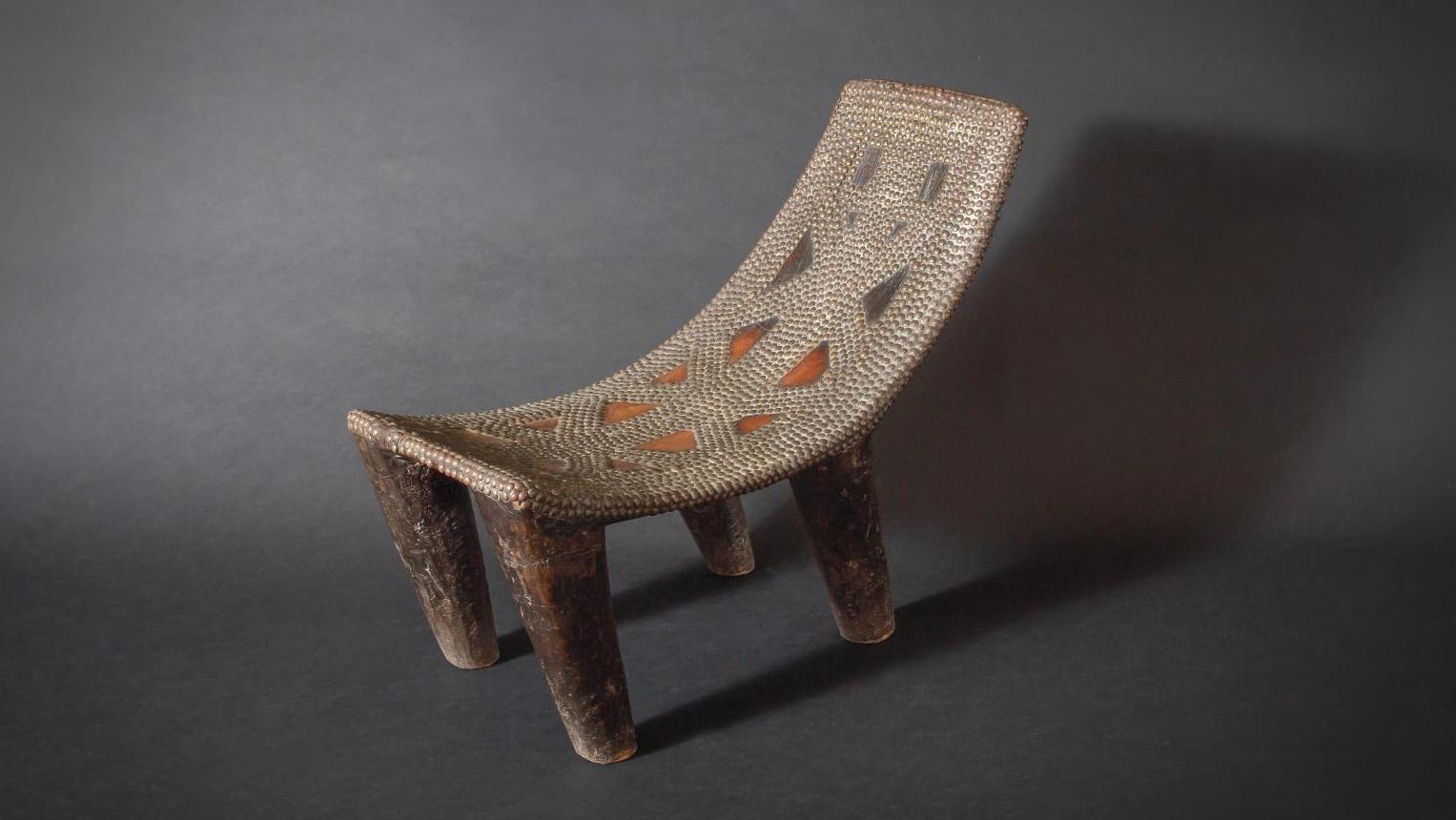by Caroline Legrand

Congo, Ngombe chair, studded seat, worn patina on the seat and black lacquered patina on the legs, l. 60 cm/23.62 in, seat h. 22 cm/8.66 in, backrest h. 47 cm/18.50 in. Estimate: €8,000/15,000
"Jeanne Tachard deserves serious research by art historians," says auctioneer Bertrand de Latour. No sale or book has ever focused entirely on this larger-than-life personality who left her mark on the first half of the 20th century. The dispersion in Montpellier of 80 lots from her collection, owned by the children of her adopted son, Bernard Segond, and her nephew Frederic Johnston, offers an opportunity to discover this unconventional woman, a fashion designer who became a patron of avant-garde artists. Like French writer Colette , a close friend, she had an outstanding career that led her to professional and social success. "She was born Jeanne Poncin in 1870 into a family of very modest means in a small Jura village, where her father was a farmworker," says Mr. Johnston. She arrived in Paris around 1900 with nothing but her golden hands and a very secure sense of taste. "Jita", as her family called her, worked in sewing shops before meeting a young engineer named André Tachard, the eldest son of a member of parliament and ambassador Albert Tachard, whom she married in 1901. His parents, wealthy Protestants from Mulhouse whose families had made a fortune in banking, opposed the union, but André was deeply in love with his wife and had confidence in her talent. In 1907, he bought her Suzanne Talbot's milliner's salon at 14 rue Royale in Paris and Jeanne soon became the greatest hat designer of her day. Gifted with incredible foresight, she rose to the level of the great designers, including her neighbor on rue de la Paix, Jacques Doucet, designing hats that matched his dresses. In a few years, they were all the rage with high-society women. She made a fortune—and entered a new world. Click here to read more




